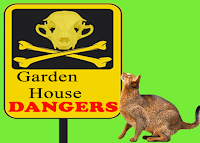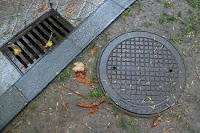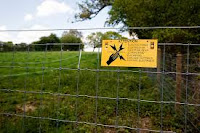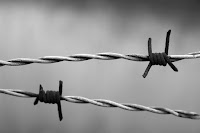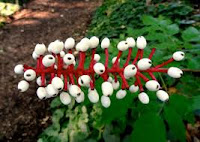There is a saying goes that a cat has nine lives. Such a vital course should prompt its owner to avoid jeopardizing it! In fact, living alongside man, cats are surrounded by all sorts of dangers. Automotive traffic, piping glances, tilting windows or boiling electric plates can be fatal to these curious little ones. Besides, they can seize abandoned objects, such as needles or decoration of the Christmas tree, to play or even hurt themselves. The following tips have no other purpose than to help you avoid accidents on a daily basis.
Manholes are a deadly fatal to cats and other small animals. These should be covered with a fine mesh (5 mm mesh) for the protection of all animals.
Barbed wire can be fatal to many animals. To protect birds nesting in the trees from the attacks of cats, there are various ways that are clearly safer; So a plastic cone is placed around the trunk, or a belt specially designed for this purpose. The barbed wire must not be used as a fence because the risk of injury to humans and animals is too great.
Hunters by the soul, cats normally risk little to nibble at toxic plants in the garden. But for the interior, one should give up choosing poisonous plants.
It may happen that cats take plants from grass and consume them, such as pampas herbs or papyrus, whose sharp edges wound the mucous membranes, the esophagus and the stomach. The cats then release pieces of them into a stream of saliva tinged with blood. It is therefore a question of avoiding this type of plants and, as a good alternative, one can propose cat grass which will allow to release concretions of hair in the stomach or to trigger the vomiting.
Dangers in the Garden
1.Pond and swimming pool
Most cats flee water and never go bathing on their own accord (with the exception of Turkish Van cat breed). But, like other animals, they sometimes fall into unsecured ponds and pools. Smooth walls or steep banks are in this case deadly traps where the luckiest cat hardly finds a way out. They swim until exhausted before drowning. Therefore, flat edges or ramps should be established respectively for ponds and swimming pools; a ramp reaching water will allow our felines to escape from this bad step.
2.Manholes
Manholes are a deadly fatal to cats and other small animals. These should be covered with a fine mesh (5 mm mesh) for the protection of all animals.
3.Electric fences
Badly laid electric fences, whether made of knotted yarns or grazing nets, may endanger cats’ and other small animals’ lives. If the current is brought to the ground, the aforementioned animals are exposed to current surges which will contract their musculature. They will no longer be able to escape and die in atrocious pain. Such energized fences should be monitored daily and the lowest wire / cord should move about 25 cm from the ground so that hedgehogs, hares, martens, amphibians and cats can move freely. It is forbidden to pass a high-voltage current through it, it is necessary to limit itself to the lowest possible current and this one must be activated only in case of absolute necessity.
4.Barbed wire
5.Bird Protection Nets
As a general rule, only wrapping or relaxed nets are a danger to cats. Therefore, immediately remove the unused nets so that no animal can get entangled. Nets should be well stretched and sufficiently spaced from the ground to reduce the risk of small animals being trapped.6.Venomous Animals
Venous or biting insects usually have a yellow-black coloration that warns cats that they should not attack them. However, it happens that a wasp or a bumblebee stings a cat. If it is in the area of the muzzle or neck, consult the veterinarian immediately, as edema can block breathing. The skin of terrestrial toads and salamanders produces toxic secretions. If a cat tries to crunch this kind of animal, it will drool and have nausea that will in principle remove it from these beasts in the future. There are therefore no special precautions to be taken.7.Traffic
Traffic accidents are by far the leading cause of death for cats under the age of 2 years old. Elder cats are normally more cautious on roadsides but can also be crushed. As a preventive measure, there is only one way, but its effectiveness has never really been verified. The cat is placed in a basket, covered on the top but not in the front, which is brought on a sidewalk, the gate facing the road. It is then expected that some vehicles have passed. During this time, you will avoid talking to the cat and placing yourself in front of the basket. Then it is brought back without comment to the house, where the animal is released. You can do this exercise twice maximum. The goal is clear: the street and vehicles must scare the cat, so it avoids these dangers in the future. If we repeat this process too often, the cat becomes accustomed to the noises of traffic and we get the opposite result!
8.Hay season
Each year fawns and cats are cut into the meadows. If you live in a rural area, speak with neighboring farmers about the possibility of detecting the presence of such animals in the tall grass using infrared devices. Animal welfare associations and hunters help volunteers to discover cats and fawns in the prairies before the harvest. The best thing is to leave your cats at home during the hay period. Cats, but especially hedgehogs and frogs, can be injured when a brush cutter or pruner is used to mow the grass without prior checking under hedges and bushes.
9.Fireworks
The national holiday and the New Year's Eve are synonymous with fear and panic for many cats because of the detonations. It is hardly possible with cats, unlike dogs, to go abroad on these dates to avoid these noises; it is because the cat is faithful to its places of predilection and the only solution is to lock it up in time at home, preferably in the afternoon already; they will then be offered dark places to retire in peace. Under no circumstances should a frightened cat be consoled, for its fearful reaction will only be reinforced. If a cat is very sensitive to detonations, you will have the advantage of discussing a few weeks with the veterinarian about possible drug treatments.
Dangers in Household
10.Tilting window
By entering or exiting through a tilting window, the cat faces the risk of being stuck, unable to get out of the trap on its own, or slip even lower in the gap and seriously injure itself in the trunk area. Internal wounds can be fatal. Unfortunately, the tilting windows have already cost the lives of many cats. In the presence of these companions, care must be taken to never turn the window or to provide it with a device, a triangular protective grid available in specialized shops.11.balconies
It's a good thing that indoor cats have access to the balcony. But it should be secured by a tight net, because cats - all eager to hunt - will try to catch birds at the risk of losing balance. Contrary to widespread opinion, cats in principle suffer serious injuries when falling by more than one floor. Attention: the kittens can pass the head through the usual mesh of the net (4 cm), to get mixed and choke. Therefore, use a fine mesh net for young cats!12.Electric hob, pots and pans
13.Microwave
Many cats have already burned their legs on an interlocked electric foil. For safety reasons, these velvet legs have nothing to do near the cooker during cooking, and the interlocked foil should never remain unattended. Never allow the handle of a saucepan to protrude from the burner hob is a wise precaution, as boiling contents may inadvertently overwhelm you, a child or a cat, causing fatal burns. Let us avoid repeating the tragic story of the owner of a cat who had put it to dry in the microwave and thus cruelly put an end to its days. Microwaves heat water - but also water in the body and in the cells of live animals. The poor cat was cooked alive. In principle, cats have absolutely nothing to do on the kitchen block, near the hob and the microwave! If this happens, the laying of aluminum foil is a conclusive measure of precaution, because cats do not like to venture into this kind of material.
14.Washer and dryer
Leaving the washing machine half-full and the door open is an almost irresistible invitation for cats. Failing to control the drum before starting the program, the animal can be locked up and washed until death ensues. Therefore, the machine should always be switched on immediately after filling, so that no pussy can hide in there. The same applies to the dryer.15.Other possible hazards
Any potential source of danger to cats should be eliminated in a household, as would be the case for small children. For example, the toilet lid will be folded down to prevent curious kittens and, before switching on the sauna, check that it is empty. No watering cans containing fertilizer or insecticide should be allowed. Be careful also at the bottom of the water in a watering can, a clumsy cat could pass the head to drink and get stuck. So always fill the watering cans well. When a cat misses the call, a good reflex: first inspect the cabinets and chests of drawers.16.Toys and small dangerous objects
Cats are attracted like magnets by small objects resembling prey and by what can be chewed and scraped. A toy or a pretended toy therefore also involves dangers.17.Wool pads, cords, fine twine, yarn, needles included
Rubber or elastic bracelets with hair can be swallowed by cats and cause intestinal occlusions which, among those cats accustomed to go out freely and not regularly in a sand litter, will not be detected in time, means death. Thread, wool and fine string are toys appreciated by cats. As long as they are entrusted to them only under supervision, there is little danger, but they cannot reasonably be allowed to drag after the end of the game. The risk is also that they swallow the string or thread. A tragic case, as he tried to extract a woolen thread from his cat's mouth, an owner hurt its throat and digestive system. The animal did not survive. If balls, plush mice, hazelnuts, crumpled aluminum foils or other similar objects are used for the game, they should be large enough that the cat should not be able to swallow them - object has at least the size of a nut. As for smaller objects (paper clips, scraps of gums, pins, etc.), they must be deliberately out of the reach of cats.18.Christmas and Easter decoration
Christmas tree, sequins, Christmas ball hooks, chocolate Easter eggs, small plastic eggs, etc. also have a fascinating effect on cats. Apart from the danger of seeing the Christmas tree fall under their action, it must be said that most of its balls are made of glass, even those with silvery reflections! If a cat breaks one, he can get hurt atrociously. On the other hand, glitter, hooks and shards of Christmas balls can be ingested by cats, damaging their digestive tract or causing intestinal occlusion that can prove fatal. The chocolate and silver paper of Christmas and Easter are indigestible to them.
19.Poisons
Cleaning agents, naphthalene balls, paints, lacquers, medicines, fertilizers and plant protection agents should be kept in a sheltered place for animals and children. In principle, cats are more sensitive than dogs to most toxic substances. Their owners must be especially careful.20.Toxic plants
It may happen that cats take plants from grass and consume them, such as pampas herbs or papyrus, whose sharp edges wound the mucous membranes, the esophagus and the stomach. The cats then release pieces of them into a stream of saliva tinged with blood. It is therefore a question of avoiding this type of plants and, as a good alternative, one can propose cat grass which will allow to release concretions of hair in the stomach or to trigger the vomiting.

